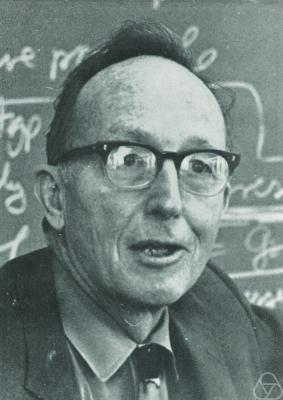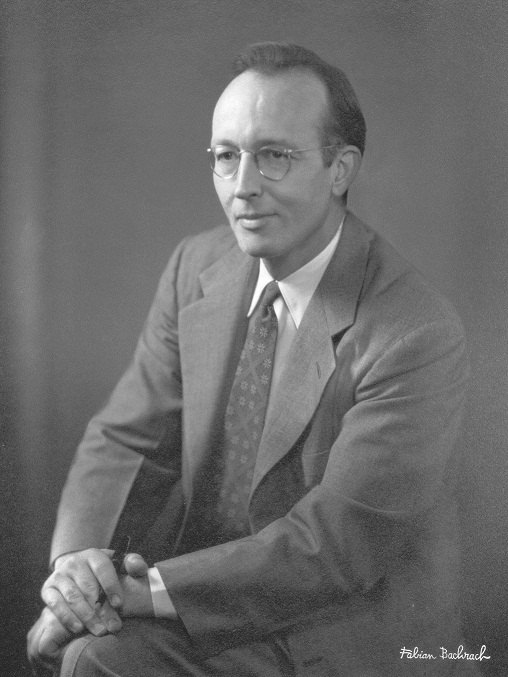<Back to Index>
- Mathematician Saunders Mac Lane, 1909
- Writer Walter Horatio Pater, 1839
- Diplomat Raoul Wallenberg, 1912
PAGE SPONSOR


Saunders Mac Lane (4 August 1909, Taftville, Connecticut – 14 April 2005, San Francisco) was an American mathematician who cofounded category theory with Samuel Eilenberg.
Mac Lane was christened "Leslie Saunders MacLane", but "Leslie" fell into disuse because his parents, Donald MacLane and Winifred Saunders, came to dislike it. He began inserting a space into his surname because his first wife found it difficult to type the name without a space.
Mac Lane earned a BA from Yale University in 1930, and an MA from the University of Chicago in 1931. During this period, he published his first scientific paper, in physics and co-authored with Irving Langmuir. He attended the University of Göttingen, 1931 – 1933, studying logic and mathematics under Paul Bernays, Emmy Noether and Hermann Weyl. Göttingen's Mathematisches Institut awarded him the Ph.D. in 1934.
From 1934 through 1938, Mac Lane held short term appointments at Harvard University, Cornell University, and the University of Chicago. He then held a tenure track appointment at Harvard, 1938 – 1947, before spending the rest of his career at the University of Chicago. In 1944 and 1945, he also directed Columbia University's Applied Mathematics Group, which was involved in the war effort as a contractor for the Applied Mathematics Panel.
Mac Lane served as vice president of the National Academy of Sciences and the American Philosophical Society, and as president of the American Mathematical Society. While presiding over the Mathematical Association of America in the 1950s, he initiated its activities aimed at improving the teaching of modern mathematics. He was a member of the National Science Board, 1974 – 1980, advising the American government. In 1976, he led a delegation of mathematicians to China to study the conditions affecting mathematics there. Mac Lane was elected to the National Academy of Sciences in 1949, and received the National Medal of Science in 1989. After a thesis in mathematical logic, his early work was in field theory and valuation theory. He wrote on valuation rings and Witt vectors, and separability in infinite field extensions. He started writing on group extensions in 1942, and began his epochal collaboration with Samuel Eilenberg in 1943, resulting in what are now called Eilenberg – MacLane spaces K(G,n), having a single non-trivial homotopy group G in dimension n. This work opened the way to group cohomology in general. After introducing, via the Eilenberg – Steenrod axioms, the abstract approach to homology theory, he and Eilenberg originated category theory in 1945. He is especially known for his work on coherence theorems. A recurring feature of category theory, abstract algebra, and of some other mathematics as well, is the use of diagrams, consisting of arrows (morphisms) linking objects, such as products and coproducts. According to McLarty (2005), this diagrammatic approach to contemporary mathematics largely stems from Mac Lane (1948). Mac Lane had an exemplary devotion to writing approachable texts, starting with his very influential A Survey of Modern Algebra, coauthored in 1941 with Garrett Birkhoff. From then on, it was possible to teach elementary modern algebra to undergraduates using an English text. His Categories for the Working Mathematician remains the definitive introduction to category theory. Mac Lane supervised the Ph.Ds of, among many others, David Eisenbud, William Howard, Irving Kaplansky, Michael Morley, Anil Nerode, Robert Solovay, and John G. Thompson. In
addition to reviewing a fair bit of his mathematical output, the
obituary articles McLarty (2005, 2007) clarify Mac Lane's contributions to the philosophy of mathematics. Mac Lane (1986) is an approachable introduction to his views on this subject.